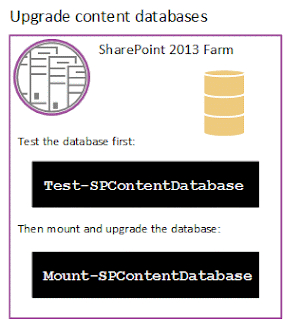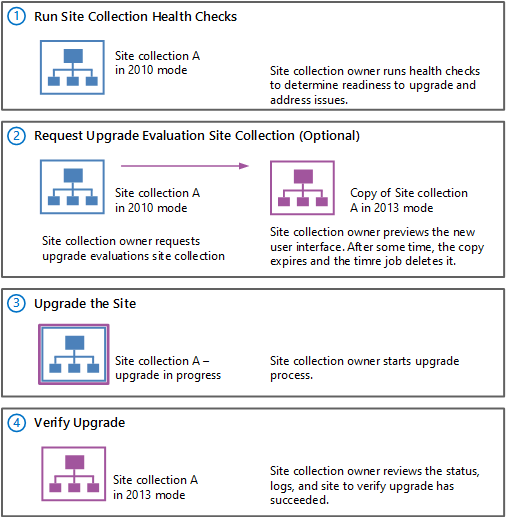As clearly indicates in the figure, SharePoint 2013 up gradation divided in to five stages:
First Stage: Create SharePoint 2013 Farm:
As shown in the figure, first install SharePoint 2013 to a new farm and then set the SharePoint 2010 farm to read-only.
Second Stage: Copy Databases to New Farm:
Use SQL Server Management Studio to copy databases to a new farm. First set the databases to read-only mode and then back up the content and service application databases from the SQL Server instance to SharePoint 2010 Products farm. After that restore content and service application databases copy to the SQL Server instance on the SharePoint 2013 farm and then set the databases to read-write on the new SharePoint Server farm.
Third Stage: Upgrade SharePoint Service Applications:
In this stage, first configures the SharePoint service applications for the new farm. As clearly shown in the figure, create a web application on the SharePoint 2013 farm with same urls & port numbers for each SharePoint 2010 web application.
After that installs all server-side customization just like shown in figure.
Fourth Stage: Upgrade Content Databases:
After completing the all above process, attach the content databases to the new farm and then upgrades the content databases for those web applications.

Fifth Stage: Upgrade Site Collections:
In the final stage, upgrade site collections. In this stage, first we have to upgrade My Sites & then to upgrade Products site collections.
'My Sites' are upgraded by the site owners & covers four stages process which is clearly indicate in the figure:

If you are a site owner & get the upgrade notification on your site's home page about new version availability then start upgrade your sites as soon as possible. Site collection up gradation divided in to four stages which are clearly shown in the figure:

Hope the article will help you to upgrade SharePoint 2010 to SharePoint 2013.





No comments:
Post a Comment